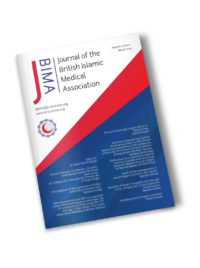
Studies have shown that community initiatives such as Restart a Heart and British Islamic Medical Association’s (BIMA) Lifesavers program help teach effective CPR to the public. CPR mannequins and simulation models are traditionally used however incur a significant expense and may not be available in low resource settings. In the context of an increasing demand for training; difficulty in resource procurement, lack of models and logistical dissemination have been highlighted as obstacles to matching this demand.
Yorkshire Ambulance NHS Service, in conjunction with the Resus Council UK have developed a ‘pillow partner’ apparatus. ‘Pillow Partners’ are a standard pillowcase with markings of the surface anatomy of the human thorax, accompanied by simplified instructions on providing chest compressions. BIMA procured this apparatus for trial in their annual Lifesavers project, which aims to teach Basic Life Support skills (cardiopulmonary resuscitation, choking management and the recovery position) to the public through faith institutions.
We appraised whether the pillow partner was found to be useful to volunteers in community delivery of CPR. An online feedback form was devised and shared with a section on the pillow partners. The form consisted of a rating scale to determine usefulness of the apparatus, from 1-10 (1 = not useful to 10 = very useful) and an option for free text comments.
The feedback from over 300 attendees was largely positive with 93.5% of individuals rating it 6 or more. They suggested that pillow partners provided a visual mechanism to aid delivery and the learning experience. It increased accessibility for younger and smaller bodied individuals compared to mannequins. Additionally, the use of pillow partners is more cost effective than mannequins due to a reduced price and lower associated costs (maintenance and storage) which has significant implications for equity of access in low-resource settings.
Overall, analysis of responses and discussion suffices pillow partners have been useful in community BLS teaching initiatives. However, hesitation of volunteers in using the apparatus, lack of depth perception and lack of recoil has also been identified.

